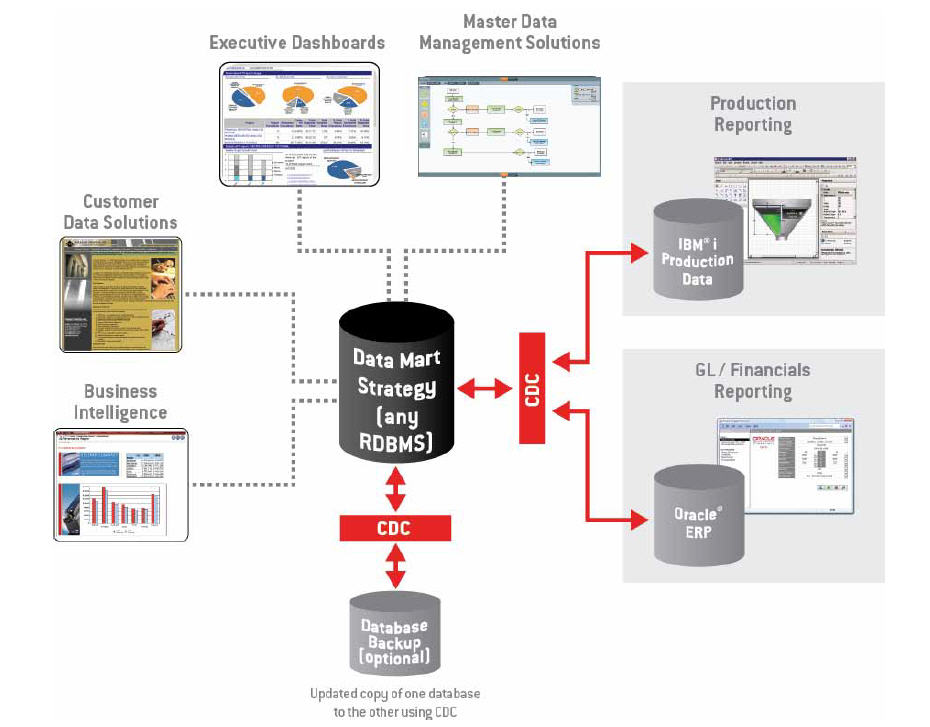
PostgreSQL supports multiple different logical decoding output plugins that can output the data in different formats. In PostgreSQL, logical decoding refers to the process of decoding the contents of that WAL into an application-specific form, such as SQL statements.Ī modern approach allows PostgreSQL to keep track of all the database changes by decoding the WAL. Solving some of the problems: CDC via logical decoding

You can think of the PostgreSQL tables as a queryable cache of the log. The WAL, as it turns out, is the actual source of truth about the state of a PostgreSQL instance. WALs are typically used for data recovery by replaying them to get back to a particular state. PostgreSQL has built-in functionality for this in the form of a write-ahead log (WAL) that records all the changes that are made. Actions can then be performed on only the changed data, resulting in great savings in resources and time.
MYSQL CHANGE DATA CAPTURE SOFTWARE
Built-in change data captureĬhange data capture (CDC) refers to a set of software design patterns used to determine (and track) the data that has changed. In this article, we’ll take a look at how Aiven for PostgreSQL captures changed data. What’s more, this change can readily be rolled back to restore the datastore to an earlier state. Transferring only the delta (that is, data that has changed) is much more efficient than mirroring or cloning an entire table. Fortunately, change happens and progress occurs, and you can now duplicate only the changes during a synchronization operation. What if the information is needed at a remote point immediately, so that action can be taken in a timely fashion?Ī few years ago, periodic bulk updates were the only option for copying an entire database.

Updates are often done to this canonical store in bulk in fact, if we’re talking about ETL (Extract, Transform, and Load), these updates may run only periodically (for example, daily or weekly) and, as such, are always behind the present moment. Most of the time, data’s journey through your company’s systems starts and ends with its initial store. (Yes, it’s shocking, isn’t it.) So what happens when PostgreSQL data changes within a table and requires prompt action?


 0 kommentar(er)
0 kommentar(er)
